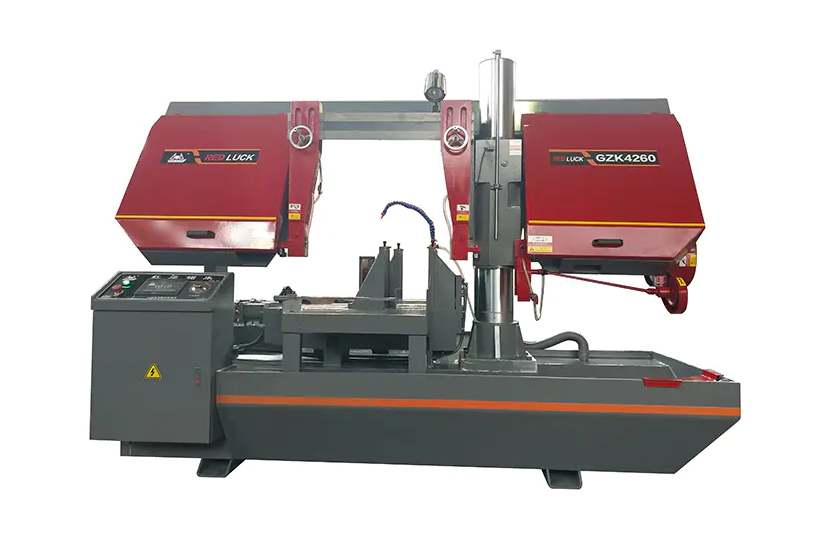The automatic horizontal band saw has become a reliable tool in industrial and workshop environments. Known for its ability to handle repetitive cutting tasks with consistent results, this type of saw is commonly used in metal fabrication, structural steel work, and pipe cutting operations. The horizontal configuration provides balanced blade movement, contributing to steady cuts and reduced vibration.
Unlike manual or semi-automatic machines, the automatic horizontal band saw allows for continuous operation. Workpieces are fed into the machine via hydraulic or servo-driven mechanisms. This automated material feed increases throughput, especially when processing high volumes. Operators can pre-set cutting lengths and quantities, minimizing downtime between cycles.
The saw blade itself is mounted horizontally and travels downward across the material, typically held in place by adjustable vices. A range of blade sizes and tooth configurations can be used, depending on the material hardness and section geometry. Coolant systems are often integrated to reduce heat and prolong blade life.
Applications for automatic horizontal band saws extend to cutting square tubes, round bars, and rectangular stock. The design is particularly effective for producing uniform pieces in quick succession. With programmable control panels, users can input precise cutting parameters to suit various production needs.
In terms of maintenance, these machines are constructed for durability. Regular blade inspection and proper tension adjustment are essential. Many models include diagnostic indicators to signal when service is needed, further reducing unexpected interruptions.
The automatic horizontal band saw continues to evolve with digital interfaces and sensor feedback systems. These improvements aim to enhance operational control without increasing complexity. For businesses aiming to reduce manual labor while improving consistency in metal cutting, this equipment offers a practical approach.
